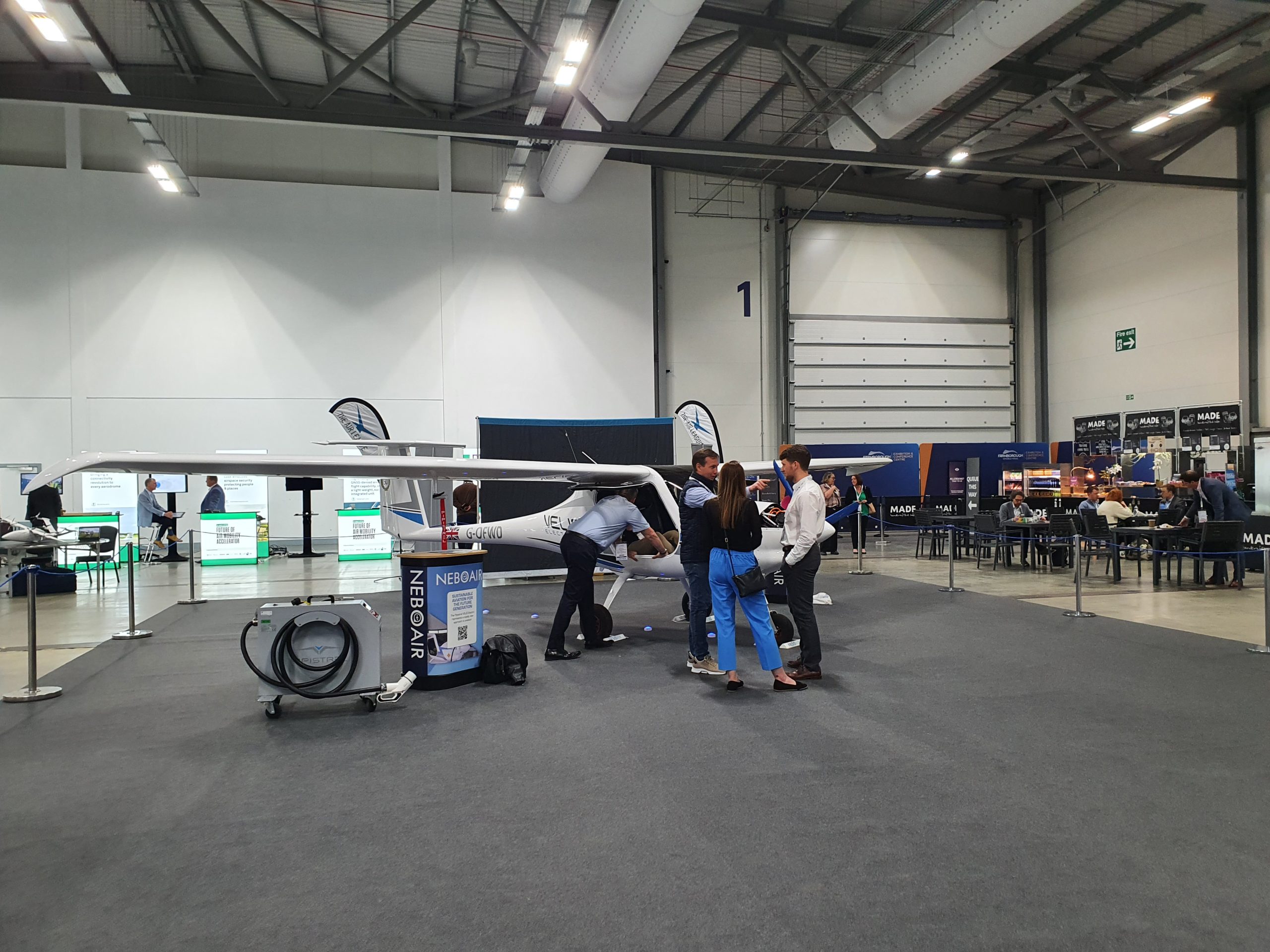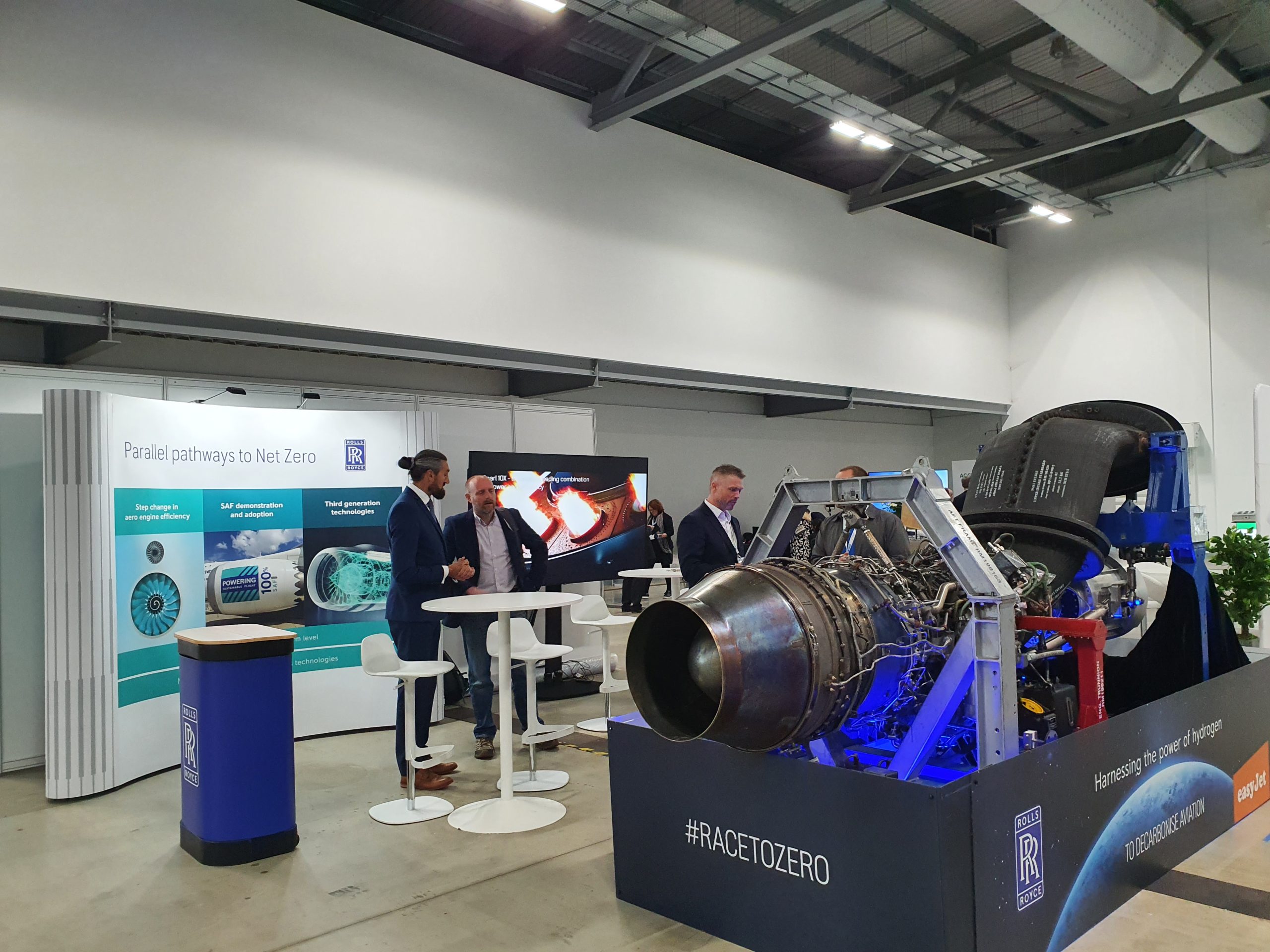The long and challenging road to Jet Zero by 2050: A round-up of Farnborough’s Sustainable Skies World Summit
Posted: 23 June 2023 | Chunekshi Wimalasuriya | No comments yet
Chunekshi Wimalasuriya, International Airport Review’s Editorial Assistant, took to Farnborough’s Sustainable Skies World Summit to listen in on panel sessions and immerse herself in the discussion of sustainability in aviation.


Getting immersed in discussions at Farnborough's Skies World Summit
Sitting in on the session ‘Regulator’s Vision’. which was panelled by the Chair of UK Civil Aviation Authority (CAA), Sir Stephen Hillier, we discovered a lot about what the UK regulator was doing to work toward achieving its sustainability goals.
Firstly, the context in which the CAA are operating is key to explaining the steps they are taking. Looking at the statistics provided by Sustainable Aviation online, there is a rising demand to reduce decarbonisation costs, to upgrade fleets and to adhere to the standards set out by Carbon Offsetting and Reduction Scheme for International Aviation (CORSIA) and Emission Trading Schemes (ETS). These demands are predicted to intensify in the future, which may be why the CAA’s panel session – and why the whole summit – has been modelled after these aims.
At Farnborough’s summit, Hillier recommended some of the fuels that would be of interest to invest in. It’s unfeasible to expect that airports can be fully efficient with onsite renewable energy. Facilities like solar panels are costly and divert manpower that can be used more efficiently elsewhere. Investing in greener fuels such as Sustainable Aviation Fuel (SAF) and hydrogen are instead the areas to look at. They could replace ordinary jet fuels and mitigate the pollution of carbon dioxide into the ozone.
Join us live: Shaping the Next Generation of Hold Baggage and Air Cargo Screening
Join us live for an insightful webinar on 11th December at 14:00 GMT, in collaboration with Smiths Detection, as we explore the strategic balance of operational efficiency, regulatory compliance, and sustainability in high-volume security environments.
This session offers a focused look into future-proofing your security strategy.
Key learning points
- Cost Reduction: Strategies to minimize bag travel time while simultaneously reducing operational costs.
- Regulatory Roadmap: Insights into the next wave of regulatory changes and their impact on future investment decisions.
- Sustainable Systems: Practical approaches to building sustainability into security systems and lowering the total cost of ownership (TCO).
- Scalable Solutions: Real-world examples of scalable systems supporting current airport growth and preparing for tomorrow.
Register now for expert insights, case studies, and actionable strategies on operational efficiency!
That, however, potentially breeds new problems. These fuels, especially hydrogen powered fuels, require stable infrastructure to safely store. Because it would take decades to create the necessary infrastructure, is risky for humans to use and is incredibly costly, there has been no inertia to use them. Hiller did stress though, that once the work has been done, the business could be self-sufficient and generate revenue alone.


Some of the new technologies at the Farnborough conference. Credit: IAR.
For airlines and airports to consider investing in these fuels, they must then consider larger-scale planning, further investment and upgrading airport features. Only then, can greener fuels be used in a safe and efficient manner.
On this note of financing sustainability, Hillier did propose a solution: partnerships.
Cross-sector partnerships are essential to alleviating the financial burden of sustainable aviation solutions. Service providers, electricity companies, airlines, airports etc., must all do their part and collaborate to prevent sustainable developments lying dormant because of a costly price tag.
CAA’s Chair stated that there must be a shift in people who are interested in investment. He stressed that the Jet Zero Council will bring together disparate governments to enable work towards sustainable infrastructure. Hillier touched upon how the passenger will help to contribute to the cost of sustainability.
Cross-sector partnerships are essential to alleviating the financial burden of sustainable aviation solutions.
Some of the lasting questions that Hillier had were how to include people in this topic, and is their contribution important? How are governing bodies looking to support sustainability?


Some of the panel discussions at Farnborough Summit. Credit: IAR.
Funding the transition
The panel discussion, ‘Funding Transition’, chaired by Marie Owen Thomsen, Chief Economist of IATA, and Ingrid Holmes, Executive Director at the Green Finance Institute, depicted some of the harsher realities of funding sustainability in aviation.
Questions circulating included how will sustainability in aviation be financed? How will newer and greener technologies affect businesses, both big and small? Who will contribute to the costs of these technologies? Governments, airlines or the customers?
Panellists prefaced conversations by explaining the context at which aviation is operating in: Currently, there is a huge demand for finding accessible solutions to financing sustainability. Making sure that keeping manufacturing costs at an all-time low, while mitigating costs to travellers so that it remains affordable and accessible, are points of consideration among the aviation industry.
Speakers acknowledged that support for green financing was coming from many areas, not just within the aviation industry. Government policies and regulation set out by the EU – such as the EU’s Taxonomy, which establishes a classification system for environmentally sustainable activities to encourage investor confidence. The EU’s Taxonomy helps to mobilise private capital and support a transition to a low carbon economy. These policies are just one of the many examples governments have in trying to make financing aviation an accessible option.


Racing to Jet Zero by 2050 at Farnborough. Credit: IAR.
Members of this panel also discussed, and stressed, the importance of cross-sector collaboration. These partnerships would help make green financing an affordable reality for many. Both organisations of the public and private sector must collaborate on mitigating costs of fuels like SAF and hydrogen-powered fuel, so that they can be delivered to the UK.
As it stands, only 0.1% of jet fuel consumption is SAF, a drop in a bucket filled with jet fossil fuels.
Additionally, panellists agreed for a shift in interested areas of investment. Previously, financing aviation was all about pooling money into ‘green projects’; the LMA’s Green Loan Principles, for instance, encourages green bonds to be loaned out to banks to fund projects with environmental benefits. Examples of projects included energy efficiency, clean transportation and pollution prevention and control. These loans can demonstrate commitment to good environmental practices.
However, shifting attitudes has called for sustainably linked financing instead. This concept is where someone stockpiles considerable financial resources for the purpose of financing greener fuels, and banks would later support this with debt-financing. Panellists jokingly called this the ‘love-money’ and acknowledged financing this way would enable both more cross-sector collaboration and production of SAF.
This isn’t without its risks. Sustainable aviation technology is experimental, and with risks that are high and returns that are uncertain, this makes it unattractive to funders. There is no upside to debt either, if investors do take a leap of faith, there is no guarantee they will yield anything. To mitigate what is considered to be a highly entrepreneurial process, the aviation industry needs the support of regulators to remove some of the risk and insecurity.
Getting this support has proven to be a challenge. As it stands, only 0.1% of jet fuel consumption is SAF, a drop in a bucket filled with jet fossil fuels. Government officials have previously promised to reduce subsidise towards fossil fuels and allocate this funding toward SAF. However, panellists reported that this still isn’t happening, with 2022 seeing the largest subsidies ever toward fossil fuels.
The road ahead remains rocky. For the aviation industry to successfully generate and use SAF and green-fuel alternatives, they have to rely on considerable funding, cross-sector partnerships and government regulators – all of which come with their own individual challenges. Navigating these issues amidst a climate crisis is yet another uphill struggle.
But once this has been achieved, the aviation industry will be free of restraints and can exist for decades to come.
Join our free webinar: Beyond silos: How ecosystem thinking elevates the airport experience
In today’s complex aviation landscape, airports are moving beyond siloed operations to embrace a new era of collaboration. This webinar focuses on how leading airports are using ecosystem thinking to adapt, personalize, and continuously improve every touchpoint, boosting both passenger satisfaction and non-aeronautical revenue.
Date: 13 Nov | Time: 10:00 GMT
REGISTER NOW TO SECURE YOUR SPOT
Can’t attend live? No worries – register to receive the recording post-event.
Related topics
New technologies, Social responsibility, Sustainability, Sustainable Aviation Fuel (SAF), Sustainable development


















